
The Ku Klux Klan, commonly shortened to the KKK or the Klan, is the name of several historical and current American white supremacist, far-right terrorist organizations and hate groups. The Klan was "the first organized terror movement in American history." Their primary targets at various times have been African Americans, as well as Jews and Catholics.
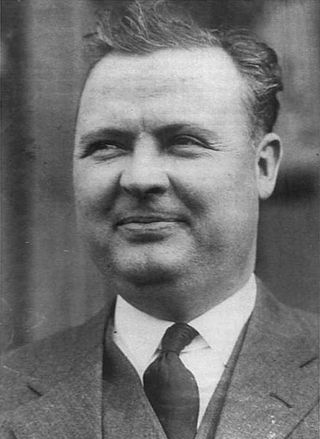
David Curtis "Steve" Stephenson was an American Ku Klux Klan leader, convicted rapist and murderer. In 1923 he was appointed Grand Dragon of the Indiana Klan and head of Klan recruiting for seven other states. Later that year, he led those groups to independence from the national KKK organization. Amassing wealth and political power in Indiana politics, he was one of the most prominent national Klan leaders. He had close relationships with numerous Indiana politicians, especially Governor Edward L. Jackson.
A Kleagle is an officer of the Ku Klux Klan whose main role is to recruit new members and must maintain the three guiding principles: recruit, maintain control, and safeguard.
This is a partial list of notable historical figures in U.S. national politics who were members of the Ku Klux Klan before taking office. Membership of the Klan is secret. Political opponents sometimes allege that a person was a member of the Klan, or was supported at the polls by Klan members.

Earle Bradford Mayfield was a Texas lawyer who, from 1907 to 1913, was a Texas State Senator. In 1922, he was elected to the U.S. Senate as a Democrat. He was the first U.S. Senator to be widely considered by the voters to be a member of the revived Ku Klux Klan in the 1920s. Mayfield quietly accepted KKK support but never said he had joined. He was defeated for reelection in 1928 when his opponent attacked his links to the KKK.

William David Upshaw served eight years in Congress (1919–1927), where he was such a strong proponent of the temperance movement that he became known as the "driest of the drys." In Congress, Upshaw was a staunch defender of the Ku Klux Klan, which was founded in his congressional district, and lost reelection because of major KKK scandals in the mid-1920s. In 1932, he ran for President of the United States on the Prohibition Party ticket, finishing the race in fifth place.
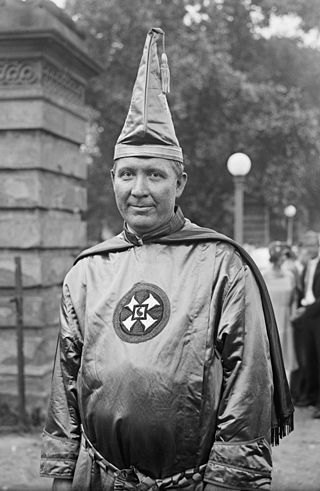
Hiram Wesley Evans was the Imperial Wizard of the Ku Klux Klan, an American white supremacist group, from 1922 to his death in 1939. A native of Alabama, Evans attended Vanderbilt University and became a dentist. He operated a small, moderately successful practice in Texas until 1920, when he joined the Klan's Dallas chapter. He quickly rose through the ranks and was part of a group that ousted William Joseph Simmons from the position of Imperial Wizard, the national leader, in November 1922. Evans succeeded him and sought to transform the group into a political power.
Ku Klux Klan auxiliaries are organized groups that supplement, but do not directly integrate with the Ku Klux Klan. These auxiliaries include: Women of the Ku Klux Klan, The Jr. Ku Klux Klan, The Tri-K Girls, the American Crusaders, The Royal Riders of the Red Robe, The Ku Klux balla, and the Klan's Colored Man auxiliary.

Women of the Ku Klux Klan (WKKK), also known as Women's Ku Klux Klan, and Ladies of the Invisible Empire, held to many of the same political and social ideas of the KKK but functioned as a separate branch of the national organization with their own actions and ideas. While most women focused on the moral, civic, and educational agendas of the Klan, they also had considerable involvement in issues of race, class, ethnicity, gender, and religion. The women of the WKKK fought for educational and social reforms like other Progressive reformers but with extreme racism and intolerance.
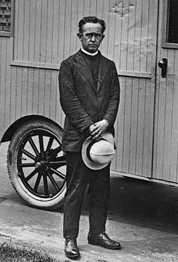
Branford Edward Clarke was an Evangelical preacher, poet and artist who promoted the Ku Klux Klan through his art which was drawn for the Pillar of Fire Church and their publications.
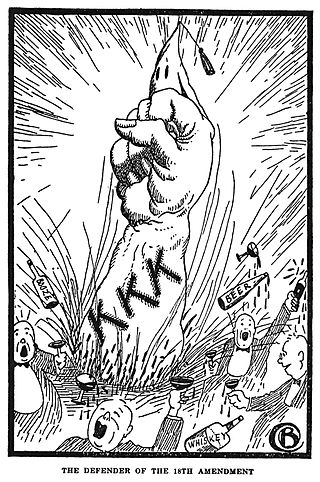
The Ku Klux Klan has had a history in the U.S. state of New Jersey since the early part of the 1920s. The Klan was active in the areas of Trenton and Camden and it also had a presence in several of the state's northern counties in the 1920s. It had the most members in Monmouth County, and operated a resort in Wall Township.
The New York World's exposé of the Ku Klux Klan brought national media to the operations and actions of the Ku Klux Klan beginning on September 6, 1921. The newspaper published a series of twenty one consecutive daily articles, edited by Herbert Bayard Swope, that discussed numerous aspects of Ku Klux Klan including rituals, recruitment methods, propaganda, and hypocrisies in logic. At least eighteen other newspapers nationwide picked up the coverage, which led to national discourse on the activities of the group. These publications included the St. Louis Post-Dispatch, Boston Globe, Pittsburgh Sun, The Plain Dealer (Cleveland), New Orleans Times-Picayune, Galveston News, Houston Chronicle, Seattle Times, Milwaukee Journal, Minneapolis Journal, Oklahoma City Oklahoman, Toledo Blade, Fort Wayne News-Sentinel, Syracuse Herald, Columbus Enquirer-Sun and the Albany Knickerbocker Press. The New York Times ran ads for the article series to increase exposure, while other large papers like the Baltimore Sun quickly picked up the article series instead of advertising for The World. The Ku Klux Klan announced shortly afterward that it would take legal action against all the publications that ran the article series for libel, seeking total damages of over $10 million. Following the exposé, Klan membership significantly increased.
Ku Klux Klan recruitment of members is the responsibility of 'Kleagles', as defined by "Ku Klux Klan: An Encyclopedia". They are organizers or recruiters, "appointed by an imperial wizard or his imperial representative to 'sex' the KKK among non-members". These members were paid 200 dollars per hour by the commission and received a portion of each new member's invitation fee. Recruitment of new KKK members entailed framing economic, political, and social structural changes in favour of and in line with KKK goals. These goals promoted "100 per cent Americanism" and benefits for white native-born Protestants. Informal ways Klansmen recruited members included "with eligible co-workers and personal friends and try to enlist them". Protestant teachers were also targeted for Klan membership.
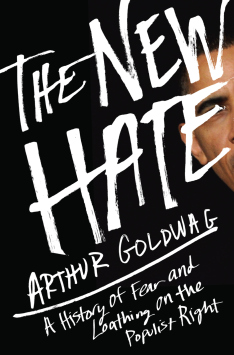
The New Hate: A History of Fear and Loathing on the Populist Right is a 2012 political science and public affairs non-fiction book by the writer and editor Arthur S. Goldwag, published by Pantheon Books. The book discusses the history of conspiracy theories among right-wing populists in the United States, in particular what Goldwag considers personalized economic conspiracy theories driven by fear and hate within the radical right and the contemporary Tea Party movement.

The Ku Klux Klan is an organization that expanded operations into Canada, based on the second Ku Klux Klan established in the United States in 1915. It operated as a fraternity, with chapters established in parts of Canada throughout the 1920s and early 1930s. The first registered provincial chapter was registered in Toronto in 1925 by two Americans and a Canadian. The organization was most successful in Saskatchewan, where it briefly influenced political activity and whose membership included a member of Parliament, Walter Davy Cowan.

The Loyal White Knights of the Ku Klux Klan is a group styled after the original Ku Klux Klan (KKK). Formed around 2012, it aims to "restore America to a White, Christian nation founded on God's word".
The Fellowship Forum was an anti-Catholic publication that was mostly read by white, Protestant fraternalists. Historian Thomas R. Pegram has described the publication as a "Klan allied masonic journal". The link between Masons and the Klan was first announced in the Fellowship Forum. After the Klan hired the Southern Publicity Association to increase the organization's membership in the 1920s, Fellowship Forum readership increased—from 1,000 readers in 1921 to a circulation of over one million by 1927. The paper has been described as "an integral part of the resurgence of the KKK among white Americans in the 1920s".
Thomas William Templeman Rice, is a British film studies scholar, film historian, educator, author, and researcher. He is a senior lecturer on film studies at the University of St Andrews in St Andrews, Scotland. Rice has written numerous articles and two books, one book is about Ku Klux Klan films, and the other book is about the British Empire's Colonial Film Unit.

Women of the Klan: Racism and Gender in the 1920s is a non-fiction book written by Kathleen M. Blee and published by the University of California Press, Berkeley, in 1991.












